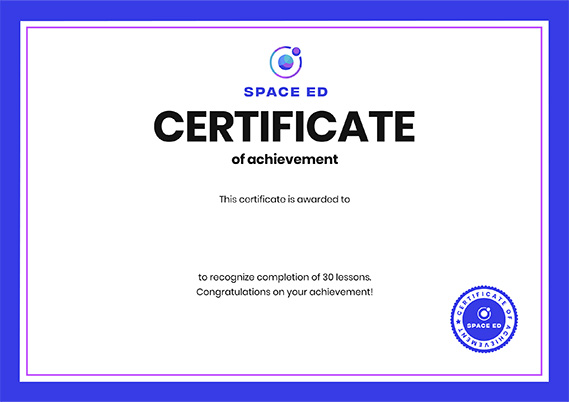The fundamentals of space-time: Part 1 - Andrew Pontzen and Tom Whyntie
1,568,543 Views
0 Questions Answered
Let’s Begin…
Space is where things happen. Time is
when things happen. And sometimes, in order to really look at the
universe, you need to take those two concepts and mash them together. In
this first lesson of a three-part series on space-time, hilarious hosts
Andrew Pontzen and Tom Whyntie go through the basics of space and time
individually, and use a flip book to illustrate how we can begin to look
at them together.
Additional Resources for you to Explore
A major focus of the first animation is to show what physics looks like from other people’s perspectives. Physics that can be analyzed from the original, stationary camera perspective can also be analyzed from the perspective of someone moving at a steady rate. This shift in perspective is known as a Galilean transformation, named after the pioneering scientist Galileo Galilei. There is a more technical description of Galilean transformations on this web page.
Galileo was the first to point out that people moving at constant speed can’t tell that they’re moving, unless they can actually see things move past them. We might notice this in a train, for example: Shut your eyes and it’s hard to tell that you’re moving. The only hints are from acceleration, deceleration, juddering, or turning – but when the train is moving steadily, you can easily fool yourself into thinking that you’re stationary unless you can see outside.
Suppose, for instance, you drop a ball inside a moving train. You’ll find it falls straight downwards, just as it would if it were dropped on a stationary train! Yet, analyzed from outside the train, the ball would follow a so-called parabola, as though it had been thrown along at the same speed as the train. The equivalence of these two points of view is not at all obvious, yet it works out. Here’s an animation that shows the idea: The top panel shows what appears to be happening on a moving ship, whereas the bottom panel shows what appears to be happening from outside.
Most importantly, this kind of thinking allows one to imagine that there is no preferred object to be thought of as "at rest." Although the surface of the Earth seems to be stationary, we do now know that it’s moving at tremendous speeds through space. It’s therefore no coincidence that Galileo was one of the first to accept that the Earth isn’t at the center of the Universe. Freed from having to relate everything to the stationary Earth, physics made rapid progress. Newton could only build his revolutionary ideas after Galileo had first stripped away the old reliance on one preferred way of looking at the world and the universe.
These days, we still rely on Galileo’s ideas that people moving at different speeds have an equally valid way of seeing and analyzing the universe. But if you move past your friend at close to the speed of light, the details of how your two views are related are more complicated than the “shearing spacetime” explored in the current video. The next video will explore further, and the “Dig Deeper” will link to the latest experimental evidence showing that everyone’s points of view are equally valid – provided that we relate them correctly.
About Space Ed
Space Ed helps you untangle the mysteries of space with the universe’s best videos on everything from Einstein's theory of relativity to what it would take to live on Mars. Brush up on the science, philosophy and mystery of space, because the fabric of the universe is the same fabric that connects us all.
Meet The Creators
- Narrator Tom Whyntie, Andrew Pontzen
- Director Patrick Semple, Mark Fisher
- Producer Daniel Spencer




